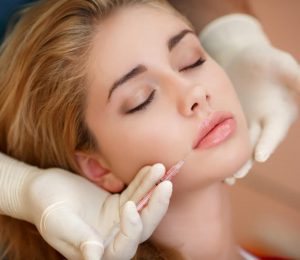TMJ Treatments
TMJ Treatments
TMJ Treatments
If you have pain in your jaw, you may have a condition called temporomandibular joint disorder, or TMD. Your jaw may hurt, the muscles of your face may spasm, you may feel clicking in your jaw, or like your jaw is getting stuck. TMD often makes eating and talking painful or impossible.
There are many different treatments for TMD and physical therapy for this condition is effective for many patients. Physical therapy for TMD is another option to help you relieve jaw pain.
Diagnosis
 If you have pain in your jaw, you should visit a TMJ Specialist in your area such as Dr. Georgaklis. He can determine the cause of your pain and can properly diagnose your condition. Diagnosis of TMD is made largely by clinical examination.
If you have pain in your jaw, you should visit a TMJ Specialist in your area such as Dr. Georgaklis. He can determine the cause of your pain and can properly diagnose your condition. Diagnosis of TMD is made largely by clinical examination.
At the diagnosis stage, Dr. Georgaklis may feel along your jaw as you open and close your mouth, feeling for any clicking or sticking.
Dr. George will also examine your jaw’s range of motion, looking for any deviations in movement. Sometimes your jaw may open without issue on one side and not the other, causing your jaw to move to one side as you open your mouth.
Dr. George may take an X-ray to check if your temporomandibular joint is arthritic.
Once a diagnosis of TMJ dysfunction is made, you can begin treatment. Treating your TMD with physical therapy may be the best option for you. Dr. Georgaklis has more than 40 years of experience collaborating with chiropractors and other specialists to provide holistic management for pain caused by TMD. Dr. George has seen improvements in TMD in hundreds of patients through the use of consistent and effective physical therapy.
PT Treatments
Physical therapy treatments for the TMJ are designed to decrease inflammation and pain, improve posture, improve jaw mobility, and help you regain normal function of your jaw. Treatments may include many potential methods for rehabilitating your joint.
Temporomandibular Joint Mobilizations
Mobilizations can restore normal joint motion and may help relocate a displaced articular disc in your jaw joint. The mobilizations may be a bit uncomfortable; many involve the treatment provider placing their thumb or finger in your mouth along your teeth to mobilize your jaw. (Don’t worry, gloves will be worn for this procedure.)
Postural Instruction

Scapular strengthening exercises may also be prescribed to improve your overall postural awareness.
Exercise for your jaw is one of the most important components of your TMJ treatment program. Dr. George often prescribes exercises to improve that way your jaw opens and closes. He may have you use a mirror so you can see how your mouth and jaw are moving and so you can ensure that they remain in proper alignment while exercising. The goal of exercise for the TMJ is to restore normal, pain-free jaw motion.
Botox Injections
Botox for the TMJ can be highly effective. Botox is typically recommended as a complementary treatment to other TMJ therapies, like night guards or physical therapy. But there may be cases where a Botox treatment is all that’s needed to get those muscles to relax. You’ll likely receive several injections throughout your facial muscles, like your forehead, temple, and jaw muscles. Most patients report very little discomfort from these injections. The effects of Botox usually last about 3 to 4 months.
Anti-Inflammatory Injections
Sometimes, it is advisable to inject a patient suffering from TMD with an anti-inflammatory medication such as a corticosteroid. As you may have guessed, the medication reduces inflammation in the affected area and decreases jaw pain and increases mobility. During this process, the medication is injected directly into the affected area. Patients who receive this type of treatment should experience improvement in their jaw’s mobility.
Application of Heat or Ice
Heat may be used on your jaw to relax muscles and decrease pain and muscular spasm. Ice is sometimes used for the TMJ to decrease inflammation and pain around your jaw.
Massage
You may benefit from using various massage techniques to treat your jaw pain. Massage may be applied to your jaw muscles, facial muscles, and neck and shoulder muscles. The goal of massage is to relax muscles and improve circulation to them, allowing for a normal motion to occur in your temporomandibular joint.
Daily Management Recommendations
The above treatment methods are all effective ways to reduce pain from TMD, but there are some strategies you can use every day to work towards a more pain free life:
- Exercise good posture
- Manage stress with breathing exercises, yoga, or meditation
- Make a point to practice simple physical therapy exercises with your jaw every day
- If you notice a certain food or activity causes pain in your jaw, try to avoid it
- Get a good night’s sleep and try sleeping face up, with pillows supporting your neck and shoulders
Receiving Safe, Effective Treatment
When seeking treatment for pain caused by TMD, it is recommended to seek the help of a TMJ Specialist such as Dr. Georgaklis. Dr. George has more than 40 years of experience using the above described techniques to bring patients relief.
